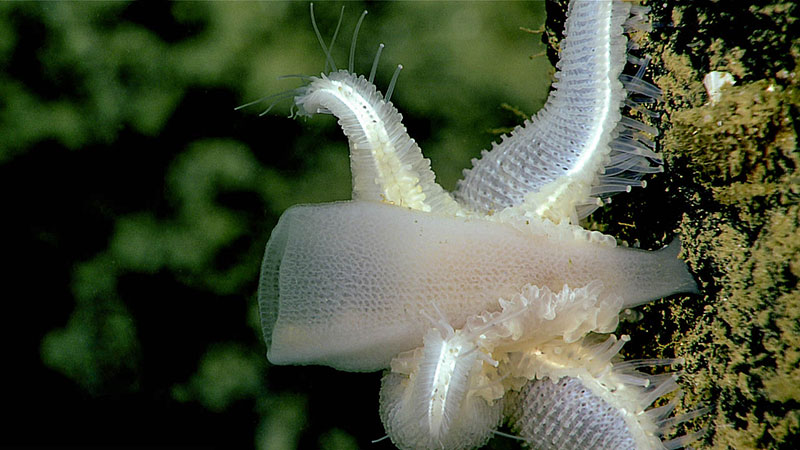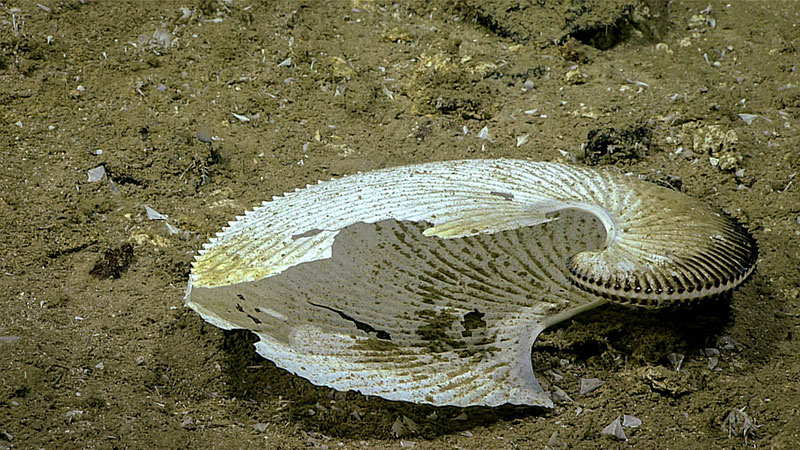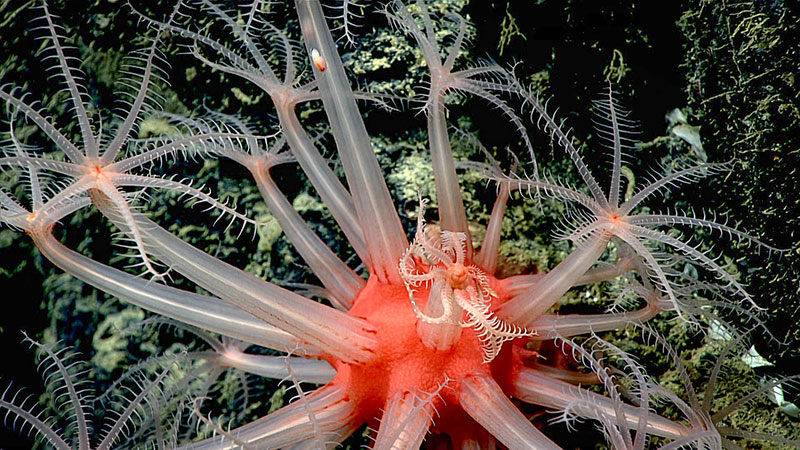Dive 08 surveyed the biology and geology of an unexplored area of the northern end of the West Florida Escarpment in the De Soto Canyon region at depths between 2,200-2,600 meters (7,220-8,530 feet). Remotely operated vehicle Deep Discoverer (D2) reached the bottom on a steep, rocky area where an unidentified cusk-eel and squat lobster were surveyed. Multiple large rocks were observed to lack encrusting fauna, but dense aggregations of pteropod shells were seen in multiple depressions near the rocks. D2 proceeded upslope to the north. Blocks of weathered, dark, gray-brown carbonate rock ranged in size from cobbles to large boulders; the coloration was indicative of surface oxidation. As D2 moved up the slope, the seafloor transitioned to exposed carbonate rock with slopes that approached vertical. Numerous corals, sponges, and crinoids were attached to the rock outcrops. Continuing upslope, D2 reached a terrace with relatively gentle slopes and a blanket of sediment cover. Some areas of the sediment exhibited bedforms, indicating enough current to move fine sediment particles. Upslope from the terrace, the escarpment was once again composed of near-vertical layered carbonate rocks. D2 reached a second terrace with sediment cover where crumbly white rock could be seen beneath a fractured tan rock crust. Aggregations of pteropod shells were observed on sediment and rock surfaces throughout the dive.
The most commonly observed animals were bamboo corals (Jasonisis sp., Keratoisis sp., Eknomisis sp., unidentified unbranched Isididae), black corals (Bathypathes spp., Stichopathes sp., Heteropathes cf. americana, Stauropathes sp.), and plexaurid corals (Paramuricea biscaya). Other animals observed included bubblegum corals (Sibogagorgia cauliflora), chrysogorgid corals (Iridogorgia magnispiralis, Iridogorgia splendens, Chrysogorgia sp.), mushroom corals (Anthomastus sp.), cup corals (Caryophyllia sp.) unidentified stoloniferan octocorals, seastars (Ceriaster sp., Pythonaster sp., unidentified Goniasteridae, unidentified Pterasteridae), glass sponges (Hyalonema sp., various unidentified hexactinellid species), a venus-flytrap anemone (Hormathiidae), shrimp (Nematocarcinus ensifer, Mysidae), stalked and unstalked crinoids, and the empty shells of two Argonaut mollusks. Fish observed during the dive included cusk-eels (Bassozetus sp. and Acanthonus armatus), and halosaurs (Aldrovandia gracilis and Aldrovandia oleosa).


